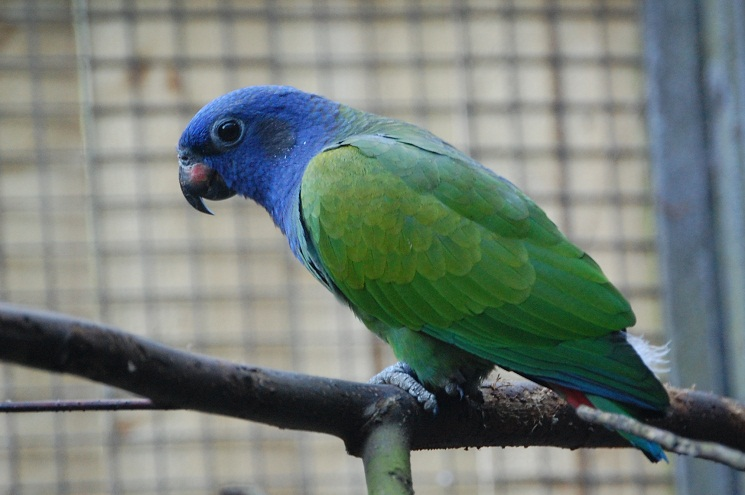Blue-Headed Pionus

Description
The blue-headed parrot is about 28 cm (11 in) long and weighs 245 g. It is mainly green with a blue head, neck and upper breast, red undertail coverts, and some yellowish on the wing coverts. The upper mandible is black with reddish areas on both sides. They have dark ear patches. In addition to the well-known nominate subspecies found throughout most of the species' South American range, there are two more localized subspecies: rubrigularis from southern Central America and the Chocó has an overall paler plumage and typically a relatively distinct pinkish patch on the throat, and reichenowi from the Atlantic Forest in east Brazil has a paler bill and most of the underparts blue. In all subspecies the male and the female are alike, and juvenile birds have less blue on the head, as well as red or pinkish feathers around the ceres. They moult into their adult plumage at about 8 months of age, but it can take up to two years for the full blue hood to emerge.
Scientific Name
Pionus menstruus
Country Of Origin
Size
Life Expectancy
Noise Level
Talk / Trick Ability
Fair, can learn to speak but not with the clearest voice.
Characteristics
Blue-headed Pionus parrots are intelligent and particularly more laid-back. Most Pionus parrots do best in a tranquil home environment. Although Pionus parrots are known for being independent, the blue-headed Pionus tends to be more affectionate with its owner. They enjoy being held and petted more if they are handled gently and socialized properly at a young age. They can become good mimics, but they speak softly and without a quiet environment their mimics may go unnoticed.
Behavior / Health Concerns
Some blue-headed Pionus parrots can become aggressive and territorial, so socialize your bird early on to avoid unwanted behavior. Sleep is important for all Pionus parrots. Let them have 11 or 12 hours every night. They susceptible to vitamin-A deficiency, visceral gout, aspergillosis (respiratory disease) fungal infections and obesity. A mixed seed and pelleted diet along with fresh fruits and vegetables is ideal for this pet bird. Blue-headed Pionus parrots often prefer cabbage, broccoli, peas and carrots.